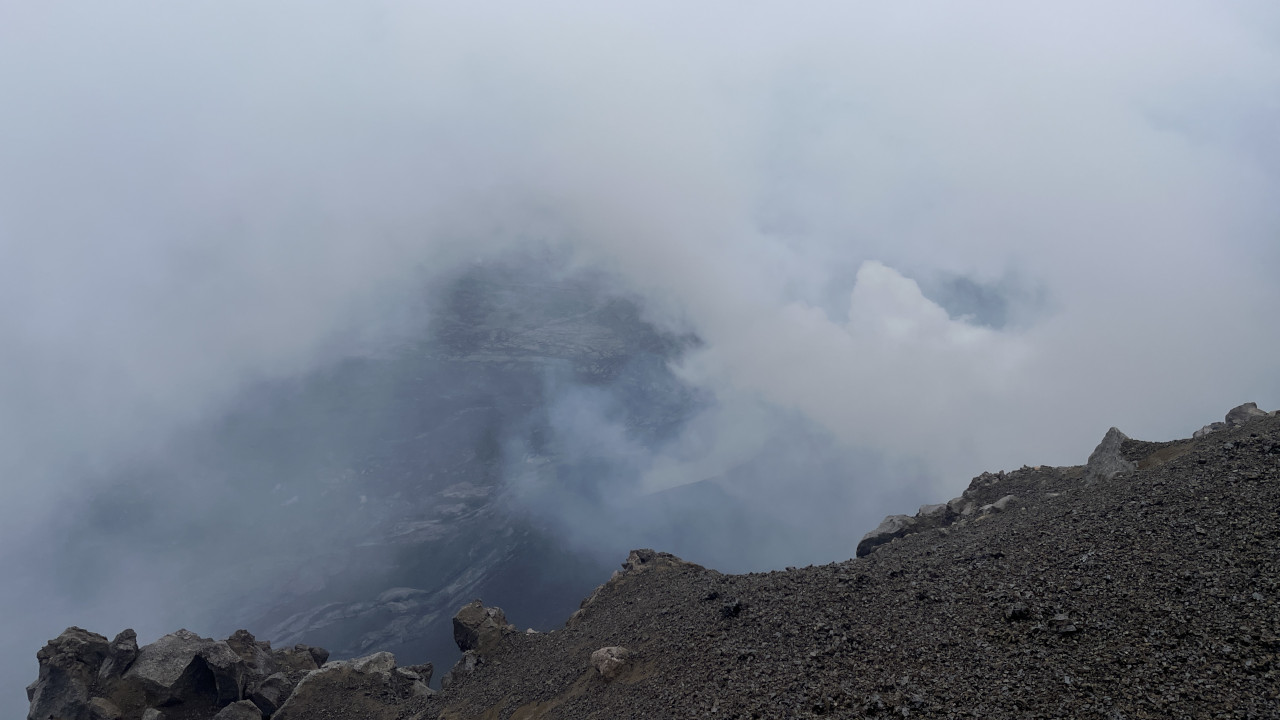(BIVN) – The ongoing eruption at the summit of Kīlauea remains paused, and Hawaiʻi officials are warning residents of the potential health hazards from continued volcanic gas emissions.
The Hawaiʻi Department of Health issued a news release on Friday, urging residents and visitors to take precautions as Kīlauea continues to produce vog and poor air quality across the islands.
Episode 18 in the summit eruption ended on April 22. The USGS Hawaiian Volcano Observatory reported the last sulfur dioxide (SO2) emission rate measured on April 10 – during the pause between eruptive episodes – was approximately 1,200 tonnes per day. however, the SO2 emission rates during high fountaining episodes have reached 50,000 tonnes per day.
From the health department:
Since the eruption first began on Dec. 23, 2024, air quality levels at several of the Hawaiʻi Island, Maui and Oʻahu air monitoring stations have varied, with periodic increases in both sulfur dioxide (SO₂) and fine particulate matter (PM2.5).
While most station readings have indicated good or moderate air quality levels, air monitoring stations located in the southern part of Hawaiʻi Island have at times shown unhealthy air quality levels. Guidance on how to reduce exposure and protect health — including recommended actions and activities should air quality levels reach unhealthy levels — can be found at: Guide for Particle Pollution | AirNow.gov and Volcano Watch — Hawaii State Department of Health updates Ambient Air Quality Data website | U.S. Geological Survey
Air quality can change quickly depending on the amount of emissions from the volcano, wind direction and other meteorological conditions. Southerly wind conditions can transport vog northward up the island chain, increasing vog concentrations in West Hawaiʻi and other parts of the islands. Particulates in the air and levels of SO₂ may increase and fluctuate in various areas of the state, causing poor air quality. As individuals’ sensitivity to vog may vary, Hawaiʻi residents and visitors are advised to be prepared for and aware of the surrounding conditions and how they may react to vog in the air.
The Hawaiʻi Department of Health (DOH) is encouraging residents and visitors to access Hawaiʻi Air Quality Data on the Clean Air Branch website at Clean Air Branch | Hawaii Ambient Air Quality Data and the Hawaiʻi Interagency Vog Information Dashboard at Vog Information Dashboard | IVHHN for the most comprehensive and up-to-date online information on vog and SO₂ from volcanic activity in Hawaiʻi.
Potential health effects of exposure to increased levels of SO₂ and PM2.5 can range from minor irritation to serious health effects, including eye, nose, throat and/or skin irritation; coughing and/or phlegm production; increased susceptibility to respiratory ailments; fatigue and/or dizziness; and rapid or difficult breathing.
People at increased risk of health problems include:
- Individuals with preexisting respiratory conditions such as asthma, bronchitis, emphysema and chronic lung or heart disease
- Children and infants
- Elderly individuals
- People who work or exercise outdoors
- Pregnant women
In the event of vog conditions, the following precautionary measures are advised:
- Contact a medical provider if any symptoms develop. Respiratory conditions might worsen rapidly in vog conditions.
- Have medications readily on hand. People with asthma or respiratory disease should always have medications or inhalers readily available. Consult your medical provider to create an Asthma Action Plan.
- Reduce strenuous outdoor activities and time spent outdoors to limit exposure and minimize health risks.
- Stay indoors and close windows and doors. Set air conditioners to recirculate indoor air. If you need to move out of an impacted area, keep windows closed and set the car’s air conditioner to recirculate.
- The DOH does not recommend the use of respirators by the general public to protect against volcanic gases.
- Short-term use of surgical, cloth, KF94, KN95 or N95 masks can help protect against volcanic ash but not gases such as SO₂.
- “Sensitive groups,” such as children or people with preexisting respiratory conditions, should be especially cautious because N95 or other masks typically do not fit children, and the breathing resistance caused by masks can worsen respiratory disorders.
- Masks will not provide effective protection for people with beards or mustaches, as they prevent a tight seal to the face.
- Many common masks, including surgical masks and bandanas, will not provide substantial protection from PM2.5 or SO₂.
- Safe occupational use of respirators requires correct mask and/or filter cartridge selection, physician screening, annual fit testing and training on correct use, maintenance and storage.
- For more information on protection from ash inhalation, see: ivhhn.org/ash-protection.
- Do not smoke and avoid secondhand smoke.
- Drink plenty of fluids to avoid dehydration.
- Use air purifiers that can reduce PM2.5 and SO₂ (vog.ivhhn.org/vog-protection).
- Consider leaving areas with poor air quality for locations with improved conditions.
- Have family emergency plans prepared and ready.
- Heed warnings by county and state emergency management officials.


by Big Island Video News9:59 pm
on at
STORY SUMMARY
ISLAND OF HAWAʻI - Health officials provided information Friday concerning precautionary measures that should be taken during periods of increased vog.